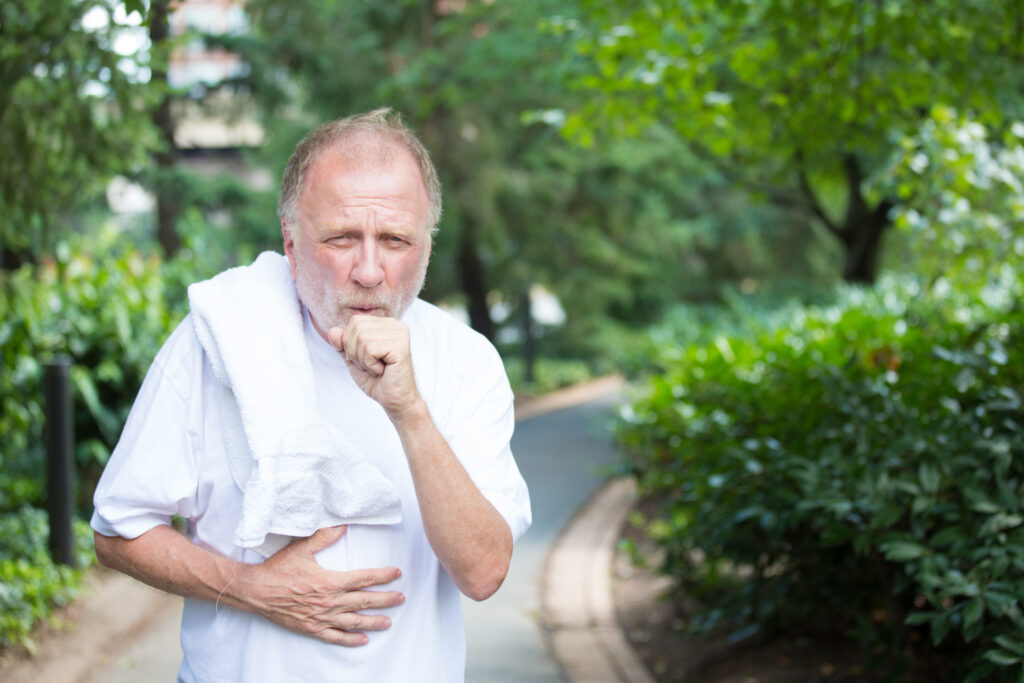
Often, it takes years for people to notice symptoms of COPD. It is not normal to cough up phlegm regularly or feel breathless.
Your doctor will listen to your lungs with a stethoscope and order lung function tests. These usually include spirometry. You will blow air into a machine to see how much oxygen is in your lungs.
Symptoms
Chronic obstructive pulmonary disease (COPD) is a progressive lung condition that affects breathing. It causes damage to the lungs and airways and is most often caused by cigarette smoke or exposure to other lung irritants like chemical fumes and dusts. It is characterized by shortness of breath, cough and/or excess mucus. It is punctuated by periods of worsening symptoms called exacerbations.
These episodes can be caused by respiratory infections such as colds or the flu, but also by environmental triggers such as air pollution. The negative impact of these episodes on activity level, health status and quality of life is significant [1].
There is no cure for COPD as the damaged lung tissue doesn’t repair itself, but there are medicines that can ease symptoms and slow the progression of the disease. Your doctor may prescribe bronchodilators to open your airways, steroids to reduce inflammation and antibiotics for respiratory infections. They may also recommend oxygen therapy.
Diagnosis
A person with COPD often has a cough that produces sputum (mucus or phlegm). Symptoms such as breathlessness and a persistent cough are often the first indication of the condition. It's important to talk with a health care provider if you have these symptoms.
A health care professional will review your symptoms and medical history. They will do a physical exam and order breathing tests to check how well your lungs are working. These tests may include a chest x-ray, a CT scan of your lungs or a pulmonary function test.
The doctor will also ask about your family's history of COPD. Some people develop COPD because their bodies don't produce enough of a protein called alpha-1 antitrypsin. A blood test can determine if you have this genetic form of the disease. Your provider will give you medications to help with your symptoms and slow the disease's progression. They may also prescribe oxygen therapy to help you breathe easier at home.
Treatment
There is no cure for COPD, but treatment can help improve symptoms and prevent complications. Treatment approaches include lifestyle changes, medications, physical and respiratory therapy, and surgery. Treatment options depend on the cause of your COPD, such as smoking or long-term exposure to air pollution, dusts or chemical fumes.
Stage 1 (mild) symptoms include occasional shortness of breath or fatigue when doing strenuous activities. Many people with mild COPD don’t realize they have a problem, but lung function tests can reveal it.
Medications may be prescribed, including inhaled steroids, antibacterial drugs and mucolytic agents. Other medicines may be added if your doctor believes it would benefit you, such as the medication roflumizumab (Daliresp). In severe cases of COPD, surgery can be done to remove large abnormal air spaces, called bullae, from the lungs. This is called bullectomy. Getting a yearly flu and pneumonia vaccine can also help reduce your risk for respiratory infections. Oxygen therapy can be helpful in some people with advanced COPD.
Prevention
COPD is a progressive disease and there's no cure, but treatment can slow the damage and improve symptoms. It's important to follow your treatment plan and get regular medical check-ups.
Symptoms can include breathing difficulty, coughing, wheezing and loss of energy. COPD affects 16 million people worldwide and many more are unaware that they have it. COPD is the sixth leading cause of disability worldwide, and it's a major cause of death.
Smoking is the most common cause of COPD, but the damage to your lungs can also be caused by air pollution and other things that make it harder to breathe, such as colds, influenza and heart disease. The best thing you can do to prevent COPD is stop smoking and avoid exposure to pollutants. You can also try using a nebulizer to help you breathe and take medicines that improve oxygen levels in the blood, such as corticosteroids. Occasionally, surgery can help if you have severe COPD and other treatments don't work. This is called lung volume reduction surgery (LVRS) and involves removing diseased tissue from your lungs.





